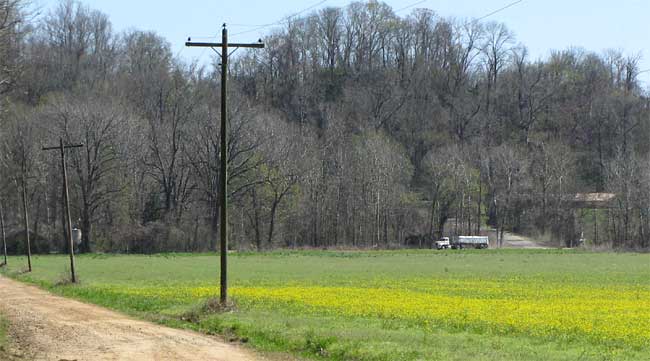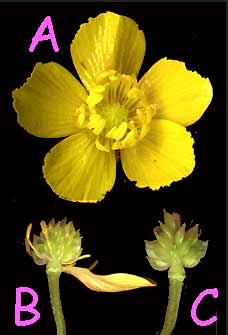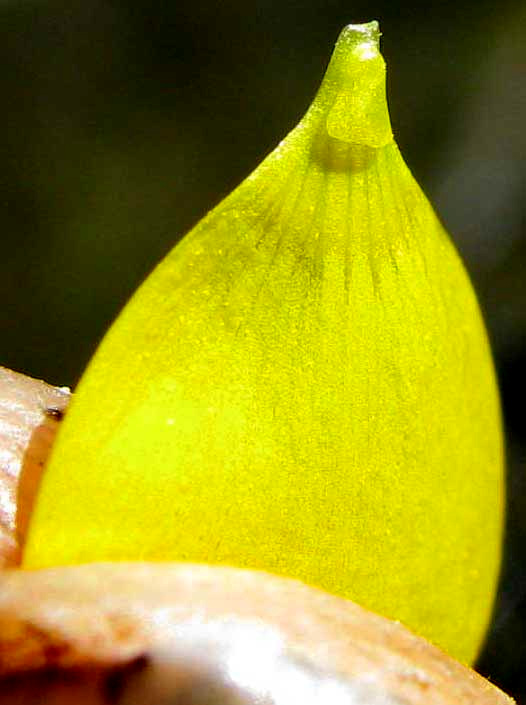

The buttercup flower at the right (A) shows the main features of a buttercup blossom. Most but not all buttercup flowers have five separate petals which are yellow (sometimes white). Unlike our Standard Blossom with its five stamens, buttercup flowers have numerous stamens with slender, yellow anthers. These stamens surround a grainy-looking center, which consists of numerous distinct, unconnected pistils (the flower's female parts, as explained on our Standard Blossom page). Each pistil develops into a small, dry fruit known as an achene, as described on our Simple Fruits Page.
When the pistils are pollinated, the stamens and petals fall away (B). The flower shown there has just a few stamens and a single petal still attached. At the right (C) is a fruiting head, with all the stamens, petals and sepals fallen away, and the pistils enlarged into achenes.

Very distinctive of the buttercup species is that each flower petal bears at its base a nectar producing "nectary" which in most species is covered by a small scale, appearing as a cup-like structure at the top of the picture at the left. If you find a small yellow blossom and you're not sure it's a buttercup, look for the nectary at the base of each petal!